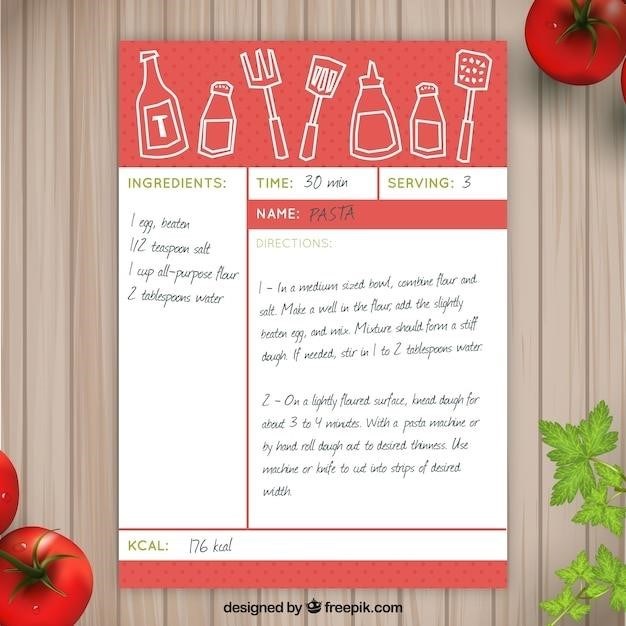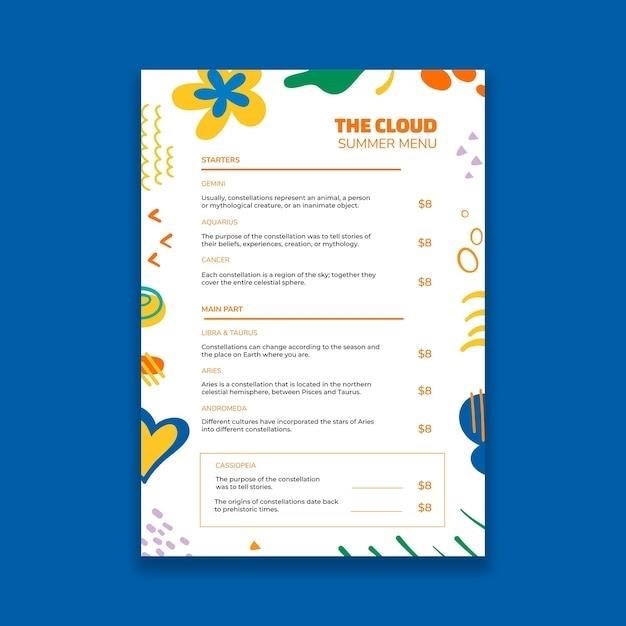Fry Word Lists⁚ A Comprehensive Guide
This guide explores Edward Fry’s influential word lists, offering a comprehensive resource for educators and learners. Downloadable PDFs of these high-frequency word lists are readily available online, categorized by grade level and frequency. These lists are invaluable tools for improving reading fluency and vocabulary.
The Fry Word List⁚ An Overview
The Fry Word List, developed by Dr. Edward Fry, is a meticulously compiled collection of the most frequently used words in the English language. Unlike other word lists, it stands out for its comprehensive nature, encompassing 1, crucial for reading comprehension. Unlike the Dolch list, which has remained largely unchanged for decades, Fry’s list is a more modern and extensive resource, reflecting current language usage. Its arrangement into groups of 100, based on frequency of occurrence, facilitates a systematic approach to vocabulary acquisition. This structured format allows for targeted learning, progressing from the most common words to progressively less frequent ones. The readily available PDF versions of these lists enhance accessibility for educators and learners alike, making them a valuable asset in literacy education.
The Fry list’s strength lies in its focus on practical application. The first account for approximately one-third of all published material, while the first comprise about half of all written words. This concentration of high-frequency words underlines their significance in building strong reading foundations. The list’s structure and accessibility make it a practical tool for both classroom and independent learning, supporting reading fluency and vocabulary expansion.
Frequency and Grade Level Distribution
The Fry Word List’s power lies in its organization by frequency and grade level. The 1, are meticulously arranged, starting with the most common and progressing to less frequent terms. This gradation allows for targeted learning, enabling students to build a strong foundation of high-frequency words before tackling less common vocabulary. The lists are often broken down into sets of 100, aligning with typical grade-level expectations. For instance, students might learn the first by the end of second grade, progressing to 300 by the end of third, and so on, culminating in mastery of all 1, by around ninth or tenth grade. This structured approach ensures a steady progression of vocabulary development, fostering reading comprehension and fluency. The frequency distribution within each 100-word group further refines the learning process, prioritizing the most commonly encountered terms within each level.
This systematic approach, reflected in readily available PDF versions, provides a clear roadmap for vocabulary acquisition. The frequency data helps educators tailor instruction to specific student needs, targeting areas requiring reinforcement. The grade-level distribution provides a framework for curriculum planning, ensuring a smooth progression of vocabulary learning throughout a student’s educational journey. This combination of frequency and grade-level alignment makes the Fry Word List a highly effective tool for vocabulary development.
Printable Fry Word Lists in PDF Format
The accessibility of the Fry Word Lists in PDF format significantly enhances their usability. Numerous websites and educational resources offer free downloadable PDFs containing the complete list of 1,. These PDFs often present the words in various formats to cater to diverse learning styles and pedagogical approaches. Some PDFs organize the words alphabetically, while others group them by frequency or grade level. Many resources offer segmented lists, breaking down the 1, into manageable sets of 100, making them ideal for incremental learning and assessment. The availability of printable PDFs allows for easy distribution in classrooms and for individual use at home, encouraging consistent practice and reinforcement.
Furthermore, the PDF format allows for customization. Educators can easily adapt the lists to suit their specific needs, perhaps highlighting certain words, adding illustrations, or integrating them into other learning materials. The portability of PDFs also makes them convenient for use on various devices, including tablets and smartphones, facilitating learning on the go. The widespread availability of free, printable Fry Word List PDFs ensures that this valuable resource is readily accessible to educators and students alike, regardless of budget or technological limitations. This accessibility significantly contributes to the widespread adoption and effectiveness of the Fry Word Lists.

Utilizing Fry Word Lists for Effective Learning
The Fry Word Lists are incredibly versatile tools for enhancing reading and spelling skills. Effective utilization involves strategic approaches tailored to individual learning styles and needs. For younger learners, engaging activities like flashcards, games, and interactive online exercises can make learning fun and memorable; Older students might benefit from incorporating the lists into writing assignments, encouraging them to consciously integrate high-frequency words into their compositions; Regular practice is key, with consistent exposure to the words in various contexts reinforcing recognition and recall. Teachers can create themed activities around the words, integrating them into reading passages, vocabulary exercises, and spelling tests to promote contextual understanding.
Differentiated instruction is crucial. Students should be challenged appropriately, with individualized goals and activities that cater to their specific strengths and weaknesses. Regular assessment is essential to monitor progress and identify areas needing further attention. This might involve timed reading exercises, dictation tests, or interactive quizzes. The Fry Word Lists aren’t just about memorization; they’re about developing a strong foundation in reading fluency and written expression. By integrating these lists into a comprehensive literacy program that encompasses diverse learning methods and regular assessment, educators can significantly improve student outcomes.

Fry Word Lists vs. Dolch Word Lists⁚ A Comparison
Both the Fry and Dolch word lists are valuable resources for vocabulary development, but they differ significantly in scope and methodology. The Dolch list, comprised of 220 basic sight words, focuses on early literacy, primarily targeting kindergarten through third grade. Conversely, the Fry list boasts 1, reflecting a broader range of vocabulary encountered in reading materials from grades 3-9. This wider scope makes the Fry list particularly beneficial for older students aiming to enhance reading comprehension and fluency beyond the foundational level addressed by the Dolch list. The Fry list’s arrangement by frequency of occurrence within specific grade bands provides a more nuanced approach to vocabulary acquisition. While both lists offer valuable tools for educators, the choice between them depends largely on the age and reading level of the students and the specific learning objectives.
The Fry list’s comprehensive nature and grade-level organization make it suitable for a wider range of applications in the classroom. Furthermore, its more recent update reflects changes in language usage, making it a more current and relevant resource compared to the Dolch list, which has remained largely unchanged for decades. However, the Dolch list’s focus on fundamental sight words remains invaluable for beginning readers, providing a strong foundation for more advanced vocabulary acquisition later on. Ultimately, both lists serve as complementary tools, each addressing specific needs within the broader context of literacy development.
Accessing and Downloading Fry Word List PDFs
Numerous websites offer free and paid downloadable PDFs of the Fry Word Lists. Many educational resource sites provide printable versions, often categorized by grade level (e.g., 1st , 2nd , etc.), facilitating targeted vocabulary instruction. Some websites offer the entire 1000-word list in a single PDF, while others break it down into smaller, more manageable sets. Free versions often include basic formatting, while paid versions may offer enhanced features like colorful visuals or interactive elements. When searching online, using keywords such as “Fry word list PDF printable,” “Fry sight words PDF download,” or “free Fry word list PDF” will yield numerous results. Always verify the source’s credibility before downloading any document to ensure accuracy and avoid potentially harmful files.
Remember to check the license associated with any downloaded PDF to ensure you are complying with copyright restrictions. Some PDFs are free for personal or educational use, while others might require purchase for commercial applications. The availability of various formats, including black and white and color options, allows educators to choose the version best suited to their classroom needs and resource limitations. This easy accessibility makes the Fry Word Lists a readily available tool for promoting literacy and vocabulary growth across different educational settings.
Benefits of Using Fry Word Lists in Education
Integrating Fry Word Lists into educational settings offers numerous advantages for both teachers and students. These lists provide a structured approach to vocabulary acquisition, focusing on high-frequency words crucial for reading comprehension. By mastering these words, students build a strong foundation for decoding and fluency, leading to improved reading speed and accuracy. The lists’ organization by frequency and grade level allows for targeted instruction, adapting to individual student needs and pacing. Teachers can easily track progress and identify areas requiring further attention. Furthermore, the readily available PDFs facilitate flexible learning environments, enabling independent practice and homework assignments. The use of Fry Word Lists can enhance classroom efficiency by providing a common framework for vocabulary development. The lists’ wide adoption ensures consistency across different educational programs and materials.
Beyond reading, mastery of these high-frequency words significantly contributes to writing skills. Students’ ability to quickly recall and utilize these common words allows for more efficient and fluent written expression. The lists can support various literacy activities like spelling tests, flashcards, and writing exercises. The structured approach fosters confidence and reduces anxiety associated with learning new words, promoting a positive learning environment. Ultimately, using Fry Word Lists empowers educators to effectively cultivate strong reading and writing skills, enabling students to become more confident and successful readers and writers.
Different Formats of Fry Word Lists Available
The accessibility of Fry Word Lists extends to a variety of formats catering to diverse learning styles and preferences. The most common format is the readily available PDF, offering printable lists categorized by grade level or frequency. These PDFs often feature clear, large fonts suitable for young learners. Some PDFs present the words in alphabetical order, facilitating quick look-ups. Others organize them into thematic groups or by increasing difficulty. Beyond PDFs, the Fry word lists are adapted into various educational resources. Flashcards, for example, provide a hands-on learning experience, ideal for memorization and quick recall. Interactive online exercises and games offer engaging ways to practice word recognition and spelling. Workbooks integrate the lists into structured lessons with accompanying activities and assessments. These resources provide a diverse range of options for teachers to incorporate Fry words into their curriculum.
Furthermore, some websites offer customized Fry word list generators, allowing teachers to create personalized lists based on specific student needs or curriculum requirements. These generators may allow for the selection of specific grade levels, word counts, or even the inclusion of particular thematic words relevant to a specific unit of study. This flexibility ensures that the Fry Word Lists can be seamlessly integrated into a wide variety of teaching methodologies and lesson plans. The variety of formats ensures that the lists remain a relevant and versatile tool for educators at all levels.
Strategies for Learning and Mastering Fry Words
Effective strategies for mastering Fry words involve a multi-sensory approach. Begin by visually familiarizing yourself with the words using flashcards or printable PDFs. Say each word aloud repeatedly, focusing on pronunciation and spelling. Incorporate writing practice by copying the words multiple times, tracing their shapes, or writing sentences using them. Games like bingo or memory matching can transform learning into an engaging activity. Reading widely exposes you to words in context, solidifying their meaning and usage. Use the words in your own writing, integrating them naturally into sentences and paragraphs.
Consider using spaced repetition systems (SRS) to optimize memorization. These systems involve reviewing words at increasing intervals, strengthening long-term retention. Break down the list into smaller, manageable chunks to avoid feeling overwhelmed. Focus on mastering one set before moving to the next. Regular review is crucial; revisit previously learned words to reinforce memory and prevent forgetting. Seek out diverse learning materials, such as online games and interactive exercises, to keep the process stimulating and effective. Collaborate with peers or a tutor for additional support and motivation. The key is consistent effort and a varied approach to learning.